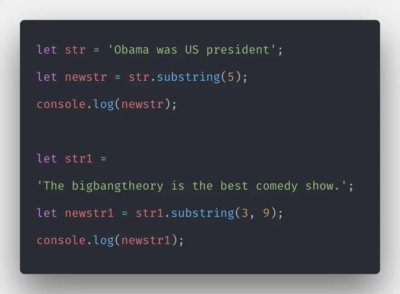
In the realm of JavaScript, the intricate world of asynchronicity holds utmost significance when crafting algorithms and intricate systems. Among the various aspects where this dynamic takes center stage, the interplay between looping constructs and asynchronous operations assumes a critical role. Delving into this subject matter, this article aims to provide you with an extensive comprehension of enabling JavaScript to patiently await the completion of a loop.
The Nuances of Asynchronicity in JavaScript
JavaScript operates as a single-threaded, non-blocking language, which means it handles operations one at a time without waiting for each task to complete before proceeding. This characteristic, known as asynchronicity, presents distinct challenges, particularly when confronted with loops.
To navigate the intricacies of asynchronicity, JavaScript employs a range of techniques:
- Callbacks: These are functions that are passed as arguments to another function and are invoked once the first function finishes execution;
- Promises: They represent an eventual completion (or failure) of an asynchronous operation and its resulting value;
- Async/Await: Introduced in ES2017, async/await offers a way to handle promises in a more synchronous-looking manner, improving code readability and simplicity.
Synchronous and Asynchronous Operations in JavaScript: A Closer Look
Before delving into loops and asynchronicity, let’s first understand synchronous and asynchronous operations in JavaScript more clearly.
Synchronous Operations
Synchronous operations in JavaScript are those which halt the execution of further operations until the current operation completes. Here’s an example:
function synchronousOperation() {
let sum = 0;
for(let i = 0; i < 100; i++) {
sum += i;
}
return sum;
}
console.log(synchronousOperation());
console.log("This will run after the synchronous operation");In this case, the second log statement won’t run until the synchronousOperation function finishes.
Asynchronous Operations
On the contrary, asynchronous operations allow JavaScript to move on to the next operation without waiting for the current operation to finish.
function asynchronousOperation() {
setTimeout(function(){ console.log("This is an asynchronous operation"); }, 3000);
}
asynchronousOperation();
console.log("This will run before the asynchronous operation");In this example, the second log statement doesn’t wait for the asynchronousOperation function to complete and runs immediately.
Synchronous Nature of JavaScript Loops
Now, let’s bring loops into the picture. JavaScript loops, like for, while, and do..while, are synchronous in nature. It means each iteration in the loop waits for the previous iteration to complete before it begins.
for(let i = 0; i < 5; i++) {
console.log(i); // prints 0 to 4 in order
}In this example, each iteration of the loop prints a number and only after printing, the loop moves to the next iteration.
Problem Statement: Asynchronous Operations Inside Loops
The real challenge surfaces when asynchronous operations occur inside loops. As JavaScript does not inherently wait for an asynchronous operation to complete before moving on to the next, it can lead to unexpected behavior when such operations are performed inside a loop.
for(let i = 0; i < 5; i++) {
setTimeout(() => console.log(i), 1000);
}You might anticipate this code to print numbers from 0 to 4, each after a second. However, it will print all numbers at once after a one-second delay because the loop doesn’t pause for the setTimeout to complete before proceeding to the next iteration.
Tackling Asynchronous Operations within Loops
JavaScript provides solutions to control the flow of asynchronous operations within loops:
- Callbacks: Nested callbacks could be used, but they can lead to “callback hell” due to increased complexity and reduced readability;
- Promises with .then() and .catch(): They allow better handling of asynchronous operations. Promises can be chained, and operations can be performed based on whether the previous operation was successful (.then) or failed (.catch);
- Async/Await: This syntax allows asynchronous code to appear as if it’s synchronous, improving readability and maintainability.
Utilizing Async/Await with Loops
The most elegant way to handle asynchronous operations within loops is by using async/await. It allows us to write asynchronous code in a way that looks synchronous.
Here’s an example:
async function printNumbers() {
for(let i = 0; i < 5; i++) {
await new Promise(resolve => setTimeout(resolve, 1000));
console.log(i);
}
}
printNumbers();In this code, the await keyword forces JavaScript to wait for the promise to resolve before moving on to the next iteration. The numbers are printed one at a time, each after a one-second delay, just as one might expect.
Detailed Case: Handling Arrays of Promises with Promise.all()

In a situation where you’re dealing with an array of promises and need to wait for all of them to resolve, Promise.all() comes in handy. It returns a single promise that fulfills when all the promises passed as an iterable have been fulfilled.
let promises = [1, 2, 3, 4, 5].map((i) => {
return new Promise((resolve) => {
setTimeout(() => resolve(i), 1000 * i);
});
});
Promise.all(promises).then((results) => {
console.log(results); // prints [1, 2, 3, 4, 5]
});In this example, Promise.all() takes an array of promises. It waits for all of them to resolve, then logs the results in the order they were in the array, not in the order they resolved.
Conclusion
Managing asynchronicity, especially within loops, is a common challenge for JavaScript developers. However, modern JavaScript provides tools like callbacks, promises, and async/await, to handle these issues effectively. Understanding and leveraging these concepts will make you better equipped to write efficient and bug-free JavaScript code. Asynchronous operations no longer need to be an obstacle; instead, they can be a powerful tool in your JavaScript toolbox.
FAQ
JavaScript was designed with the web environment in mind, where numerous operations are inherently asynchronous, such as fetching data, listening for user events, or querying a database. Asynchronous JavaScript allows the user interface to remain responsive as it doesn’t block the thread.
Synchronous code runs sequentially, meaning each operation waits for the previous one to complete before starting. On the other hand, asynchronous code doesn’t wait for an operation to finish before proceeding to the next operation. It allows JavaScript to be non-blocking and responsive to user interactions.
Traditional loops in JavaScript like for, while, and do…while are synchronous in nature. When asynchronous operations occur inside these loops, they don’t pause the loop’s execution, leading to unexpected results. This issue can be addressed by using techniques like async/await, Promises, or callbacks.
Async/await syntax is built on top of promises and allows asynchronous code to be written in a more synchronous manner. By using await inside a loop, you can pause the execution of the loop until the awaited promise settles, providing expected and controlled results.







